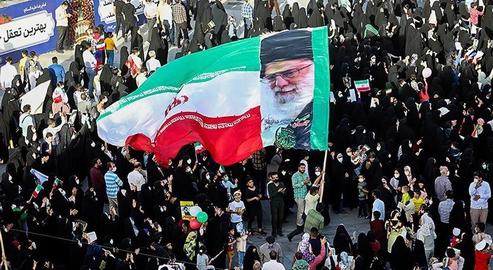The dust is finally settling on the 2021 presidential election. Ebrahim Raisi’s eventual win surprised precisely no-one. Given how inevitable his victory seemed, a straightforward appointment would have been cheaper. Instead, this elaborate and expensive farce took place at the height of an economic crisis in Iran. How to quantify its overall cost to the state and the people?
***
Item One: The Explicit Costs
Estimating the cost of elections in Iran is no easy task. There is almost no reliable financial data on governmental institutions’ related spend available to the public, and private campaign costs are similarly opaque. The only known quantity is the amount allocated to the Interior Ministry and the Guardian Council, under the general heading of “holding elections”.
Iran’s two budget laws for 2020-2021 and 2021-2022 show that in the past year, 1.69 trillion tomans were allocated to the Ministry of Interior and the Guardian Council to hold elections: that is, about 70,000 tomans from the pockets of each tax-paying household.
These funds are detailed under a segment entitled “miscellaneous expenditure”. In the 2021-2022 budget this section allocated 1.06 trillion tomans ($43m) to the Ministry of Interior for "holding elections" and 160 billion tomans ($6.5m) to the Guardian Council for “election monitoring”. The budget bill of 2020-2021 then gave another 400 billion ($16.5m) and 70 billion ($2.8m) to the two institutions respectively.
These amounts come in addition to the hefty budgets already allocated under special headings to the same two entities. In 2020-2021, about 170 billion tomans ($7m) were considered for the Guardian Council, surging to 242 billion ($10m) in 2021-2022 even though the size of the 12-member council and nature of its work remained the same.
Election expenditure is not itemized in the budget. It is not clear how this 1.6 trillion-toman figure was calculated, or how much was spent on administrative activities compared to, say, monitoring and publicity. If divided between the number of ballot boxes across Iran – 67,000 – then the base cost of Iran’s election was 25.3 million tomans ($1,042) per box.
One of the Guardian Council’s jurists has since said the Council employed some 250,000 observers in this election. Had the Council’s election budget been spent on this alone, each observer would have been paid a grand total of 920,000 tomans ($37.89) for their time.
Item Two: The Hidden Costs
The figures listed in the budget, however, only take us so far. A proper audit of payments made by state-owned (not just government) entities would likely reveal far greater expenditure. How much, for instance, was spent on favorable or pro-participation coverage by Islamic Republic of Iran Broadcasting? How much did security cost on the day?
Institutions such as the judiciary, the Expediency Council and the National Security Council are not included in the budget and it is not clear how much public money was spent promoting the candidacies of their leaders, senior members and internal favorites. No-one knows how much the Islamic Revolutionary Guard Corps spent promoting Mohsen Rezaei, or the size of the bill for the repeated, threatening phone calls to journalists who criticized Raisi.
With the exception of Saeed Jalili, no information is available on individual candidates’ campaign costs either. The former nuclear negotiator has made a faltering, if incomplete, attempt to publicly detail his campaign expenses – listing the costs of such items as two tea bags and 10,000 plastic cups among the 568 million tomans ($23,394) it apparently took to maintain his headquarters throughout the campaign season.
The rest have remained silent, and are not obliged to be anything else. There is no law in Iran to govern campaign financing, or requiring transparency from candidates on their expenses, for presidential elections. In February 2019, such a law was approved for parliamentary elections but stopped short of doing the same for elections to the top executive role.
These dark spaces cover more than just the cost of the tea bags; they are where the bulk of the gerrymandering, engineering and back-handers will have taken place. Given that the candidates were backed by competing state-owned or partially state-owned institutions, the cost to Iranians may have been dear. The show itself, meanwhile, will have been profitable for many.
Related coverage:
The Long Game: Was Mojtaba Khamenei Behind Raisi's Win?
How Might the Economy Fare Under a "Unified" Iranian State?
Spoiled Ballots in the Islamic Republic: From One Percent to Second Place
Election 2021: How Leader's Speeches Conditioned Candidates and Voters
Has the Regime Decided Low Election Turnout is its New Strategy?
Faezeh Hashemi: This is Not an Election, It’s an Appointment
visit the accountability section
In this section of Iran Wire, you can contact the officials and launch your campaign for various problems

























comments